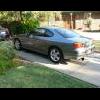450-500HP turbo, Internal or External Gate?
Announcements
-
Similar Content
-
Latest Posts
-
Uses the factory sensors? Which are currently the problem?
-
By Dose Pipe Sutututu · Posted
You can swap between OEM position or closer to chassis. Allows the suspension arms to be a bit more closer to OEM height geometry. My LCAs actually point down now, where as before they were flat. Overall real noticeable difference is I can put down close to 440kW on the street with no wheel spin. -
By Murray_Calavera · Posted
@silviaz Sounds like your making progress. Let me know how the door goes after you've got the primer down. -
I might buy a new scope actually in the morning, mine has gone a bit cloudy so was kinda useless especially as I couldn't get it in there. Might be a good first step actually.
-







Recommended Posts
Create an account or sign in to comment
You need to be a member in order to leave a comment
Create an account
Sign up for a new account in our community. It's easy!
Register a new accountSign in
Already have an account? Sign in here.
Sign In Now